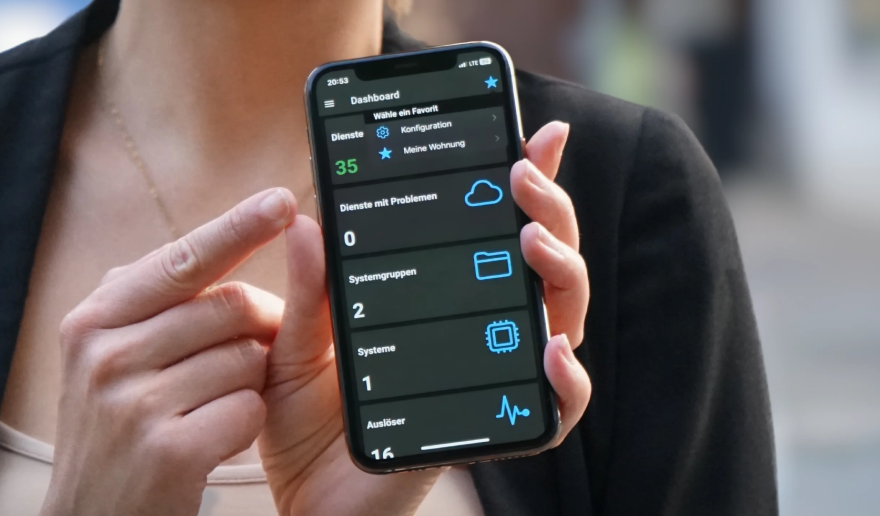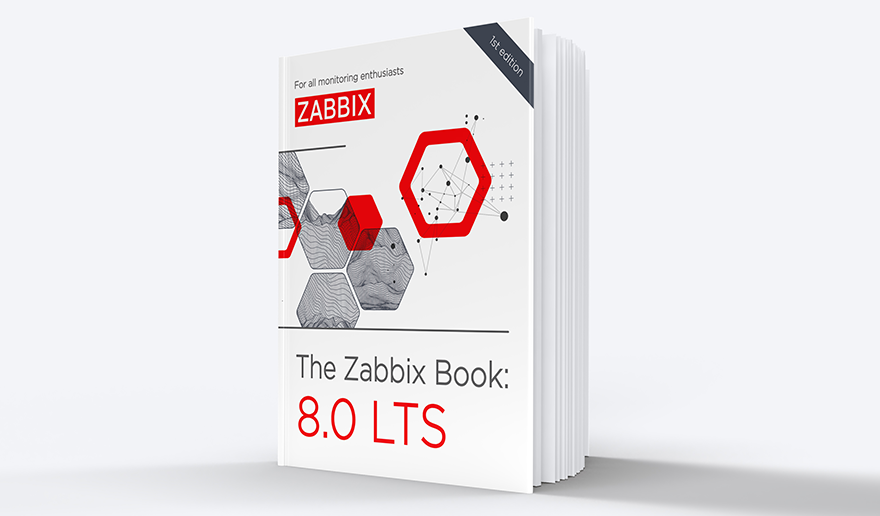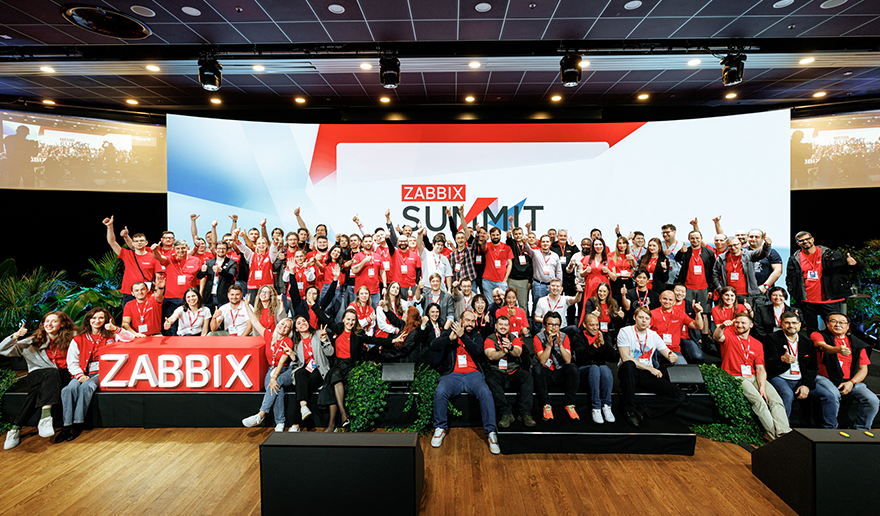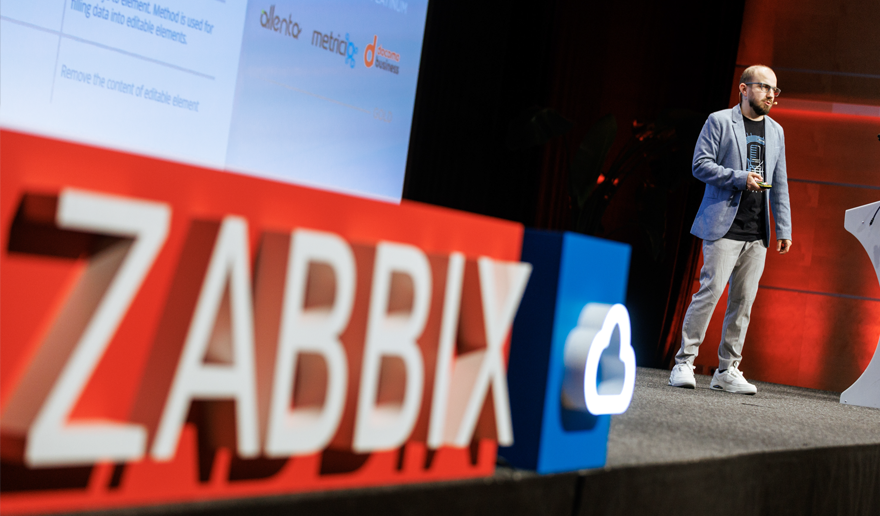This is the interview I gave to Ludovic Valentin a few days ago. He is the maintainer of Monitoring-FR, very well known resource for those interested in monitoring solutions in France.
Monitoring-FR : Results in 2011 for Zabbix: objectives achieved? What are your main satisfactions and disappointments?
Alexei Vladishev : I am happy to say that 2011 was another successful year for Zabbix.
It was the most successful year in terms of growth rate as well as absolute revenue numbers so far. We moved to a new bigger office, our core team grew to 22 people working full time on Zabbix. Also our World presence was extended thanks to our new partners.
The main disappointment, if we may call it this way, of the last year is the fact that Zabbix 2.0 is still not released. It is a result of our old wrong approach of “let’s add a bunch of new features and fix all those bugs later on”. The schema does not work.
Early last year we switched to a new development procedure allowing us to keep trunk, the latest code, as stable as possible. Let’s see how it works, but I’m sure it is already bringing
positive changes and will allow us to release new versions in the expected time frame.
I have to admit that more and more large companies use Zabbix. Quality, stability and ease of maintenance become crucial.
Last year we made serious effort of improving QA, created continuous integration platform, new development procedures, created and published coding standards and other things in order to be confident in the quality of our product. We are making very good progress in constant delivery of a better quality. Zabbix users notice these positive changes for sure.
It is interesting that some brave people already use pre-2.0 (in beta state currently) in production and I can understand why. New version has so many improvements that it’s really hard to resist. Indeed, quality of the server, proxy and agents is impressive in the latest betas, front-end deserves more testing though. Despite of this I do not recommend beta versions for production systems. Please be patient and wait for the official release of 2.0.
M-fr : Within the community Monitoring-fr, we found a rather interesting increase in the number of users of Zabbix. How do you stand in relation to competition in the French market in 2011?
Alexei : I do not think we are competing with other open source solutions. I believe market of open source monitoring solutions is still growing. We help each other actually in this respect.
Also I feel that we are in more direct competition with proprietary solutions rather than with open source alternatives. Part of our philosophy is that we do not fight for customers by any means. Those who quickly make decisions about the use of a solution may quickly change their mind if it is not too late of course. For me it’s important that the choice is based on honest comparison of technical and business benefits.
Someone on the forums called Zabbix a product for smart people. That’s very important to me. One should spend some time in order to understand the flexible architecture of Zabbix and the way Zabbix is designed to work. However as soon as you get the understanding, you won’t be disappointed by its functionality and high flexibility. Do not make your choice based on current popularity, it may change quickly. Make your chance based on your own evaluation of competing product for your unique requirements.
Let’s talk about France. Actually, France is in Top 5 countries of visitors to the Zabbix home page this year. It’s quite unexpected result of breaking into the Top 5, taking into account that this top is quite strongly held by a group of countries, traditionally being the most active adopters of Zabbix, i.e. USA, Japan, Russia and Brazil.
Currently Zabbix is used by several large French companies, including two leading banks which work with us quite actively. By the way, a couple of weeks ago we opened a new forum in French. Feel free to come and share your experience at www.zabbix.com/forum !
M-fr : Nagios is important in France. In addition, the French solution named Shinken seems to grow up with, among other things, its ease of migration (Nagios to Shinken). What are your plans to impose Zabbix on the Open Source monitoring market in France?
Alexei : There are no specific plans about France, but we treat it very seriously. I am sure you may expect much more visibility of Zabbix in France after the release of Zabbix 2.0.
Having local community contributes to a project a lot. I urge our French friends to be more active in spreading word about Zabbix.
M-fr : Given the historical weight of using Nagios in France, and the natural tendency to move towards a Shinken (see Centreon). Now, how are you convince users to select and then to migrate to Zabbix?
A.V. : Nagios has huge inertia in the minds on the people. However, we may still notice absolutely new projects based on Nagios. I think it’s easy to explain. It’s much easier to create a better Nagios based on Nagios, rather than come up with unique ideas. Obviously, Nagios is a good enough foundation for the creation of new products.
Let me explain some good points of our solution.
Zabbix was created from the scratch. It has no dependencies of other tools with the only exception of low level libraries such as net-snmp lib. Everything apart of WEB front-end is written in C language, which gives us massive advantage in speed and much lower hardware requirements. The whole Zabbix core is just a binary of 2MB in size. Even for large setups having more than 10K of devices to monitor it rarely needs more than 2GB of memory (not including requirements for the database.)
Upgrading from one minor version to another is just a matter of installing new binaries. For major upgrades the back-end database has to be updated as well. All configuration and historical data is kept in a relational database, which makes maintenance straight forward.
Zabbix API allows nice integration with other systems, such as configuration management, incident management, and other monitoring systems.
Monitoring of remote locations, branch offices or client sites has never been an issue for Zabbix thanks to Zabbix Proxy. Zabbix Proxy is a light-weight daemon collecting performance and availability data from remote networks. It supports both push and pull modes making it a perfect choice for those looking for high performance monitoring of sites behind firewalls or in DMZ. Proxy is immune to communication problems due
to support of data buffering. Zabbix Agents support buffering as well.
Zabbix provides native agents for nearly all platforms available around, including Linux, Windows, AIX, HP-UX, Solaris, Tru64 and various BSD systems. The agent is a 1-2MB binary with no external dependencies, able to process tens of thousands of requests per second if you ever need this level of performance. It executes native system calls only, no Perl, Python, Java on client side! Backward compatibility of agents is maintained for all versions of Zabbix starting from the very first release of Zabbix 1.0.
If you may get any data out of your devices, be absolutely confident Zabbix will be able to monitor it, graph it and alert you in case of any issues. This level of flexibility makes it great.
M-fr : Soon Zabbix 2.0? Some additional information? Announcements :)?
Alexei : I have to disappoint you if you ask for an exact release date. Zabbix 2.0 will be ready when it is ready, but we are very very close. At the moment we are finishing XML import/export, which is the only missing functionality of 2.0. Also we have few blocker issues in our bug tracking system to fix. First release candidate will be out when all this is done. I expect a few RCs prior to official 2.0 giving our users chance to try it before the official release.
Do not expect revolutionary changes. Zabbix 2.0 will be another step in right direction. That’s how we are developing out product. It’s important to deliver better product with every new release instead of surprising users with sudden huge modifications. However architecture should be also reviewed when needed.
M-fr : New features in 2.0 are very promising, including the network’s discovery of low-level and improved use of the inventory. There is also a new customizable interface (graphics, maps, …). Zabbix 2.0 will hit hard, isn’t it ;)?
Alexei : No doubts, we are delivering massive improvements in 2.0. Let’s have a look at the most interesting features of 2.0.
It would be possible to monitor remotely Java applications using JMX without need of Zapcat, SSL could be optionally used for extra security. Zabbix 2.0 introduces low level discovery (LLD), it delivers automatic discovery of devices, disk volumes, network interfaces, etc. It is not about the discovery of network devices, it is all about the discovery of
resources on the device level. It allows to greatly decrease the number of templates used, make them simpler and even more flexible.
Dynamically changed configuration is no longer a headache for Zabbix administrators thanks to this new feature. You may get much more detailed information about LLD by reading Zabbix Manual at http://www.zabbix.com/documentation/2.0/manual/discovery/low_level_discovery Good thing about LLD is that it can be easily extended by implementing custom discovery of any objects that you would like to monitor.
Zabbix 2.0 offers much higher level of performance thanks to in-memory caching of trigger-related information, it decreases the load on the database and lowers the hardware requirements. Here we continue our good tradition of delivering better performance with every new Zabbix release.
I have to mention changes related to the Zabbix front-end. It became easier to use, especially when it comes to configuration and administration. In addition to that we introduced a new shiny set of map icons for nearly all types of devices. Maps also support displaying of group of hosts not as a single icon, but as individual icons for all of the hosts. Now new devices will automatically be displayed, no need to add them manually.
Another important improvement is ability to use standard localization framework based on GNU gettext. We have Zabbix front-end translated to many languages including, of course!, French. Translators could make translation in a much more efficient way! Anyone is welcome to participate.
Now you can restart (boot, shutdown) servers and securely execute any commands on Zabbix agents side straight from the front-end.
We have screens based on templates. Now host related information could be grouped in a set of host-level screens.
Zabbix Agent supports more metrics for different platforms. Note that there is no need to upgrade existing 1.x agents in order to migrate to 2.0. Zabbix agents are backwards compatible.
Historical data got nano-second resolution. Visible host names were introduced to give hosts more meaningful naming based on your naming conventions in any language. Items support description field. Scope of use of user macros was significantly extended. They could be used in SNMP parameters as well as for security related information (user name, password) for SSH and Telnet checks, for example.
Another significant improvement is automatic collection of inventory data, which may gather any information that an agent can return, which in turn allows to extend this by any command.
Pro-active monitoring has also been improved. Zabbix now is able to execute remote agent/SSH/telnet-based commands for automatic resolution of discovered problems. That’s a great feature, which is normally used as a part of escalation process.
WEB monitoring was extended so that Proxy is able to execute WEB scenarios. Now it is possible to monitor performance and availability of your web application from different geographical locations, say, Japan, USA and Europe, simultaneously.
Other features?
Zabbix 2.0 brings lots of new features and minor improvements. Most of them are described in good detail on this page: http://www.zabbix.com/documentation/2.0/manual/introduction/whatsnew200
Some of initially planned functionality was not included into 2.0. It’s sad that flexible configuration of dashboard was postponed to 2.2.
M-fr : Recently, you offer a Commercial license version of Zabbix. Are there any technical differences with the GLPv2 version? Can you say more to our community?
Alexei : Let me explain. Zabbix has always been true free software without any strings attached, we continue following our philosophy of making free software. In the same time we build our business model on delivering commercial services such as yearly support agreements, training programs and sponsored development.
GPL licence is quite strict when it comes to integration of GPL code in other products or use of the code in commercial context. In order to avoid these limitations we offer commercial licensing for companies, interested in tight integration of Zabbix or its use in proprietary products. It has nothing to do with closed or open-core model. Zabbix has always been, is and will be fully free software with excellent commercial support.
I have to admit that it’s not easy to build a company and develop free software. All we do is based on selling our services. Our future depends on support of our customers. I’m still trying to find the best business model.
M-fr : Are you planning one day to attend an event in France ? Such as for example the “Salon des Solutions Linux” in Paris?
Alexei : I will be happy to participate in a conference to talk about Zabbix, my experience and topics related to free and open source software. Feel free to invite me – just drop me an email, there is a great chance I’ll come. Please be aware that I do not speak French.
M-fr : Zabbix SIA will be present at CeBIT 2012 in Germany. What are your expectations of this event? Your ambitions?
Alexei : I think that the main reason of being on CeBIT is to deliver a message to our potential partners that we are ready for expansion in the German market. Germany has great potential to become an important market for our product. We are well known, however not enough. We will demonstrate new functionality of Zabbix 2.0 and of course it is an opportunity for all interested to talk to me and my colleagues. Come visit us!
M-fr : What are the objectives of this year 2012?
Alexei : Release of Zabbix 2.0 is our primary target to be done very soon. Then we’ll be working on finalizing roadmap for 2.2 and do the actual development work, which would take most of our resources until the end of this year. The roadmap will be published on our web site as soon as it is ready.
We are going to carefully review the list of suggested functionality, most popular features have all chances to be included into 2.2. Stay in touch with the latest news!
As announced during the Zabbix Conference last year, we are moving to a fixed 9-month release cycle just after the release of Zabbix 2.0. It basically means that we may expect Zabbix 2.2, next major version, in early 2013.
I think that work on a better front-end is one of the major priorities for the future. When I say better, I mean user interface which is friendly, easy to understand, with great navigation and customizable.
Large Zabbix installations collect massive amounts of historical data, look after tens of thousands of devices and may generate hundreds or even thousands of events per second. Zabbix has all the information about performance and availability available, the front-end must be good enough to represent it in the most useful way. Current Zabbix front-end is not perfect in this sense. I am dreaming about implementing a zero-bug policy, it would allow us to dramatically improve the way we work with reported issues and bug fixing.
By the way, do not miss your chance to visit Zabbix Conference 2012 in September this year. I am sure all the participants were very excited about the conference last year, and I am sure this year it will be even better and full of surprises.
See you, and keep in touch by subscribing to our Twitter channel #zabbix.







 Prev Post
Prev Post 





I suppose I found some typos:
twice “easy easy”
or event -> or even
And thanks for great interview !
Would be happy to read more and more.